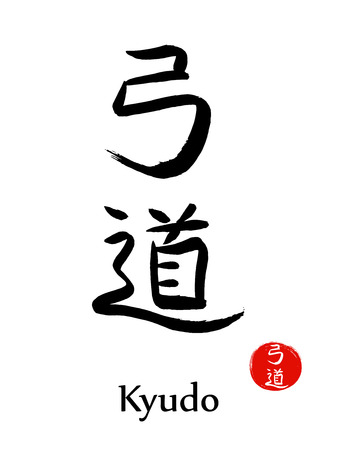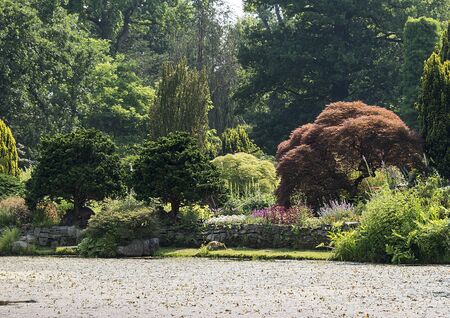1. Introduction: Merging East and West
Blending traditional Feng Shui with the timeless charm of English garden aesthetics offers a unique opportunity to marry two rich cultural legacies. At its heart, this approach seeks harmony between the ancient Chinese practice of arranging space for optimal energy flow and the quintessentially British appreciation for structured beauty and natural abundance. The allure lies in crafting outdoor spaces that are not only visually delightful but also imbued with a sense of balance and wellbeing. As we explore this fusion, we uncover how the principles of Feng Shui can complement the classic features of English gardens—winding paths, lush borders, and curated vistas—resulting in gardens that are both serene retreats and vibrant expressions of East-meets-West creativity.
2. Fundamentals of Feng Shui in Outdoor Spaces
At its heart, Feng Shui is an ancient Chinese practice that seeks to create harmony between people and their environment. When considering the integration of Feng Shui with English garden aesthetics, it is essential to understand the core principles that guide the flow of energy—known as “Qi”—in outdoor spaces. These principles are not only rooted in tradition but also lend themselves beautifully to the timeless charm and structure of an English garden.
Harmony, Balance, and Energy Flow
Feng Shui emphasises three main pillars: harmony, balance, and the unobstructed movement of Qi. In gardens, this translates into thoughtful spatial arrangement, selection of natural elements, and the use of pathways or water features that direct energy gently through the space. The aim is to foster a sense of tranquillity and well-being while enhancing the garden’s natural beauty.
Key Principles Applied to Gardens
| Feng Shui Principle | Description | English Garden Application |
|---|---|---|
| Yin & Yang Balance | Balancing opposing forces for overall harmony | Blending shaded areas (yin) with sunny spots (yang), using both soft foliage and structured hedges |
| Five Elements Theory | Integration of wood, fire, earth, metal, and water | Selecting diverse plants, incorporating stone features, metal ornaments, ponds or fountains |
| Bagua Map | Dividing space into energy zones for specific intentions | Designating garden corners for relaxation, socialising, contemplation, or growth |
| Smooth Energy Flow (Qi) | Avoiding blockages and encouraging gentle movement | Clever placement of winding paths and open lawns for meandering walks |
| Entrance Placement | Welcoming positive energy from the main access point | Caring for front gates or arched entrances with inviting plantings and clear sightlines |
The Artful Blend: Tradition Meets English Charm
By weaving these age-old Feng Shui principles into the fabric of an English garden—known for its romantic borders, clipped topiary, and informal layouts—gardeners can create spaces that not only delight the senses but also nurture the spirit. This harmonious blending sets the stage for a uniquely British interpretation of Eastern wisdom, where every path and planting resonates with intention and balance.

3. The Character of English Garden Aesthetics
When blending traditional Feng Shui with English garden aesthetics, it is essential to first appreciate the defining features that give an English garden its unique charm. Unlike formal continental gardens, the English style thrives on a sense of natural abundance and gentle informality. Informal borders—often brimming with perennials such as lavender, foxgloves, and delphiniums—soften the lines between cultivated spaces and wild nature. These borders are rarely symmetrical, instead encouraging a sense of discovery as one moves through the garden.
Lush lawns are another hallmark of English gardens. These expanses of green offer a calming contrast to the vibrant beds and provide space for relaxation and social gatherings, echoing the British love for outdoor leisure time. Lawns in this tradition are not only decorative but functional, serving as open areas for picnics or afternoon tea—a quintessentially British pastime that harmonises with Feng Shui’s emphasis on communal well-being.
Charming pathways wind organically throughout the space, often crafted from gravel, brick, or stepping stones. These paths invite visitors to meander and explore, rather than rush from one point to another. The gentle curves encourage a leisurely pace, aligning beautifully with the Feng Shui principle of slow-flowing energy (Qi). By designing walkways that reveal new vistas at every turn, English gardens create moments of delight and reflection—a perfect backdrop for integrating mindful Feng Shui elements.
4. Harmonising Elements: Practical Approaches
Integrating the wisdom of Feng Shui with the charm of an English garden is more than an aesthetic exercise; it is about creating a balanced, nurturing environment that respects both tradition and local character. To achieve this synthesis, one must carefully consider the tangible elements at play—earth, water, wood, metal, and fire—and how these can be woven into the quintessentially British landscape.
Strategic Placement of Elements
The heart of harmonisation lies in intentional placement. For instance, traditional English gardens often feature meandering paths and secluded seating areas. By aligning these pathways with Feng Shui principles—such as avoiding straight lines to encourage gentle chi flow—you can guide energy naturally through your garden, blending formality with fluidity.
Elemental Integration Table
| Feng Shui Element | English Garden Feature | Integration Strategy |
|---|---|---|
| Water | Ponds or Birdbaths | Position water features in the north for career luck; use natural shapes to soften edges. |
| Wood | Mature Trees, Hedges | Encourage vertical growth with native species like oak or yew for resilience and vitality. |
| Earth | Stone Walls, Terraces | Utilise Cotswold stone or brickwork to ground energy in the southwest corner. |
| Metal | Sculptures, Iron Gates | Add decorative wrought ironwork or sundials in the west for creativity and children’s luck. |
| Fire | Candle Lanterns, Red Blooms | Use terracotta pots or plant vibrant tulips in the south to enhance recognition and passion. |
Cultural Sensitivity and Seasonal Rhythm
A practical approach also means respecting the rhythm of British seasons. Native plants such as lavender or foxgloves not only thrive but also reinforce a sense of place while supporting biodiversity—a key tenet of contemporary gardening. Incorporate Feng Shui’s philosophy by ensuring each area receives appropriate sunlight and shade, fostering harmony between microclimate and metaphysical balance.
Sustainable Design Choices
Sustainability is intrinsic to both modern English gardening and traditional Feng Shui. Opt for permeable pathways using gravel or reclaimed York stone to support drainage (and positive energy flow), while composting fallen leaves nourishes both soil and spirit.
Conclusion: A Living Dialogue
The union of Feng Shui with English garden design is a living dialogue between East and West. By mindfully integrating elemental features and honouring local materials, you cultivate not just beauty but well-being—crafting a landscape that feels timeless yet alive, rooted yet open to new interpretations.
5. Local Materials and Plant Choices
One of the most significant ways to harmonise traditional Feng Shui principles with English garden aesthetics is through the careful selection of local materials and native plant species. Both traditions value a close connection to the land, drawing inspiration from their immediate environments. In English gardens, the use of indigenous stone for pathways, aged brick for walls, and reclaimed timber for structures not only adds authenticity but also ensures the garden remains in tune with its surroundings. From a Feng Shui perspective, these natural materials are imbued with vital energy, or qi, and promote balance within the outdoor space.
When it comes to planting, native English species such as lavender, foxglove, and hawthorn can be thoughtfully positioned to support both biodiversity and positive energy flow. For instance, clusters of holly or yew near entrances can symbolise protection in both British folklore and Feng Shui tradition. Meanwhile, fragrant herbs like rosemary and sage not only appeal to the senses but also encourage healthy chi circulation when planted near paths or seating areas.
The careful combination of materials—such as gravel that gently crunches underfoot, moss-covered stones framing water features, or locally sourced slate edging flower beds—enriches textural contrast while maintaining subtlety. These elements simultaneously respect the understated elegance of an English garden and satisfy Feng Shui’s emphasis on harmony between human design and nature’s rhythms.
Furthermore, by favouring sustainable, locally available resources and plants adapted to the British climate, you cultivate a landscape that is low-maintenance, resilient, and environmentally conscious. This aligns with the core values of both design philosophies: longevity, health, and a deep respect for place. Ultimately, selecting local materials and native flora forms a living bridge between Eastern wisdom and Western heritage, creating a sanctuary that feels authentically English yet spiritually attuned.
6. Case Study: A Fusion Garden in the British Countryside
To truly appreciate the harmonious possibilities of blending traditional Feng Shui with English garden aesthetics, let us consider the example of a private garden nestled in the rolling hills of Oxfordshire. Here, the owners—a British couple with a keen interest in Eastern philosophy—set out to create a sanctuary that respected both their love for local horticultural heritage and the principles of Feng Shui. The design began by mapping the garden’s layout according to the Bagua, ensuring clear and gentle pathways curved naturally across the lawn, echoing the meandering lines of classic English gardens while also facilitating the smooth flow of qi. Native plants such as foxgloves, lavender, and hollyhocks were chosen not only for their visual charm but also for their placement in sectors corresponding to health, family, and prosperity.
Incorporating Water Features
A tranquil pond was installed at the rear, aligning with the Feng Shui water element’s placement in the north. This feature doubles as a haven for local wildlife and as a reflective space, embodying both English romanticism and Eastern symbolism. Gentle water movement was prioritised to avoid stagnation, enhancing both ecological vitality and energetic balance.
Bridging Tradition with Modern Comfort
Classic wooden benches positioned under an ancient oak tree provide a restful spot facing south, capturing sunlight and positive energy, while offering quintessential British pastoral views. Decorative elements—such as hand-crafted stone lanterns and subtle wind chimes—were introduced sparingly to maintain authenticity without overwhelming the garden’s native character.
Resulting Harmony
This fusion garden stands as an inspiring testament to cross-cultural creativity. The owners report a profound sense of wellbeing derived from their outdoor space—a place where tradition meets modernity, East meets West, and nature is celebrated in all its layered beauty.
7. Conclusion: Cultivating Wellbeing and Beauty
Reflecting upon the harmonious fusion of traditional Feng Shui principles with English garden aesthetics, it becomes clear that this cross-cultural approach offers a unique pathway to enhancing outdoor living spaces across the UK. By thoughtfully balancing the ancient wisdom of energy flow with quintessentially British elements—such as meandering paths, herbaceous borders, and whimsical follies—we create gardens that nurture both mind and spirit. This blend not only elevates visual charm but also fosters a sense of wellbeing, inviting tranquillity, connection with nature, and a deeper appreciation for the landscape’s subtle energies. In embracing these complementary philosophies, British gardeners can cultivate sanctuaries where tradition meets modernity, offering restorative spaces perfectly attuned to contemporary lifestyles. Ultimately, this synthesis encourages us all to reimagine our gardens as living works of art—places that celebrate heritage while embracing innovation, supporting healthier, happier lives in the heart of the English outdoors.


